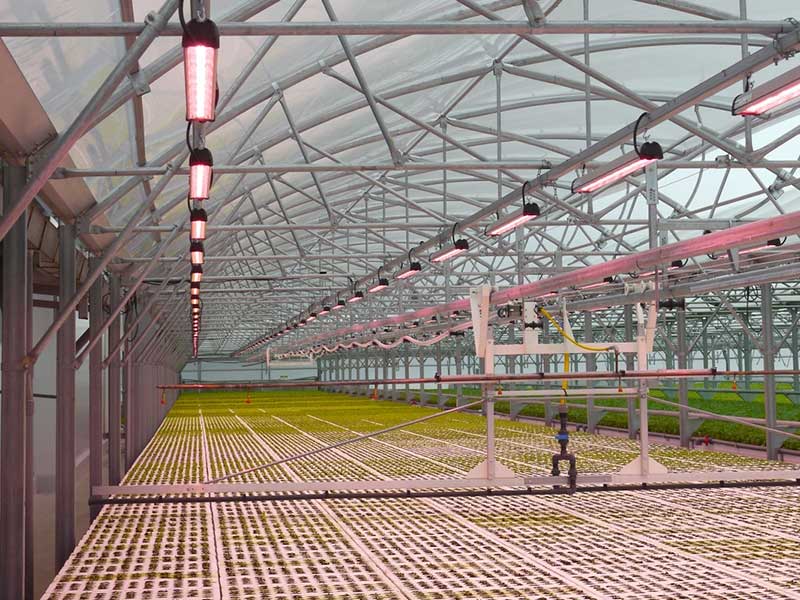Additional lighting calculation and design (choice of lamps and required number)
The first important point in designing additional lighting system in greenhouses is choosing the type of lamp
Lamp selection
The first important point in the design of additional lighting system in greenhouses is to choose the type of lamp. In most cases, MASTER SON-T Green Power sodium vapor lamps are the right choice. However, in cases where root growth is an important parameter, the MASTER HPI-T Plus metal halide lamp is more suitable in climatic conditions (temperature, humidity and CO2) despite the approximately 15% reduction in efficiency compared to the alternative sodium vapor lamp. Growth and when we are simply faced with a lack of light intensity, the mentioned sodium vapor lamp is the best choice.
In general, the small amount of blue light in the sunlight is enough to strengthen the stem and prevent grass growth, and except in cases where we have intensive greenhouse cultivation and the natural light is less than 3000 lux, sodium vapor lamps are used instead of metal halide. in which the blue part of the light is more) is preferable due to the higher efficiency.

Calculate the number of lamps required
Calculating the intensity of the required artificial light (or correspondingly the number of lamps required) requires two factors:
1) Amount of natural light available inside the greenhouse
2) The amount of light required by the plant
Usually, the total solar radiation energy is measured in local meteorological stations and published in monthly-yearly tables.
The radiant energy of the sun is usually measured with the unit "million joules per square meter per day" (MJ/m2/d-1), but as mentioned, only radiation in the range of 400-700 nm is effective for plant growth. The number of photons with a wavelength in this range is known as PPFD (Photosynthetic Photon Flux Density) and is measured in mol/m2/d-1. Studies show that plant growth is linearly related to this light intensity.
The relationship between these two is the radiant energy of the sun, which is measured by MJ/m2/d-1 and the effective light for plant growth, PPFD, which is expressed by mol/m2/d-1. It depends to some extent on the cloudiness of the air, but with A suitable approximation of the coefficient between them is: mol/m2/d-1 = MJ/m2/d-1. The intensity of growth light radiation is obtained by dividing the total effective light energy for growth in a day by the hours of light in that day. It is expressed in mmol/m2/s-1 unit. In practice, part of the light irradiated to the greenhouse is absorbed or reflected by the body and equipment of the greenhouse before reaching the plant. The light transmission coefficient in the greenhouse (or the percentage of the irradiated light that reaches the plant) depends on several factors such as the angle of the sun, the type of coating and its transmission coefficient, the dirtiness or cleanliness of the coating, and it is about 70% for a modern greenhouse.
The amount of light needed in the greenhouse and the duration of exposure depends on the type of plant and the purpose of using auxiliary light. The purpose of lighting can be to increase production (up to its potential), reduce cultivation time, or increase product quality (such as flowers). The suitable auxiliary light for most plants, whether flowers, vegetables or fruits, which are usually grown in the greenhouse, are listed in the relevant tables and sources.

